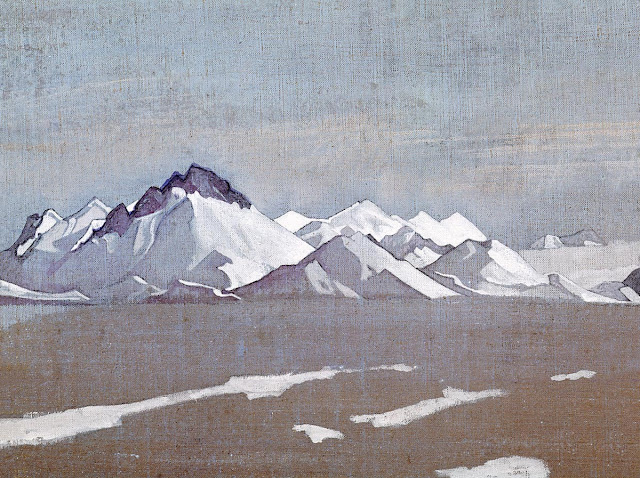FRÉDÉRIC GADMER (1878-1954)
Muqur (2,003 m -6,572 ft)
Afghanistan
In La chaine du Moqor, autochrome Lumière, glass tint, 1928, Mission Clémenceau,
Musée Albert Kahn
The Photographer
Frédéric Georges Gadmer was born in 1878 in France into a Protestant
family; his father, Leon, son of Swiss émigré, was confectioner. Before
World War II, he follows his family in Paris and works as a photographer
for the house Vitry, located Quai de la Rapée. As an heliogravure
company, it performs work for the sciences and the arts, travel and
education. In 1898 Gadmer completed his military service as a secretary
to the staff then recalled in 1914 at the time of mobilization. In 1915,
he joined the newly created "Photographic Section of the Army" and
carried pictures on the front, in the Dardanelles, with General Gouraud,
then in Cameroon. In 1919, at age 41, he was hired as a photographer by
Albert Khan for his project called "Archives of the Planet". He finds
there his comrades of "the film and photographic section of the army"
Paul Castelnau and Fernand Cuville. Soon as he arrived, he made reports
in Syria, Lebanon, Turkey and Palestine. It was the first to make a
color portrait of Mustafa Kemal, leader of the Young Turks. In 1921, he
returned to the Levant with Jean Brunhes, the scientific director of the
Archives of the Planet. The same year, he attended General Gouraud,
appointed High Commissioner in Syria. Operator and prolific
photographer, specializing in distant lands and landscapes, it covers
Iraq, Persia, Afghanistan, Algeria and Tunisia. In 1930, he accompanied
Father Francis Aupiais in Dahomey. He also works in Europe. In 1931, at
the request of Marechal Lyautey, he photographies the Colonial
Exhibition. It is one of the last person to leave the "Archives of the
Planet" threatened by the Albert Kahn's bankruptcy in 1932. He then
worked at the famous french newspaper L'Illustration and carries
postcards for Yvon. He died in Paris, unmarried, in 1954.
The mountains
Muqur (other names: Qala-i-Sarkari, Mukar, Qala-i-Sarkāri, Moqur, Mukur, Moqur, Moqor) is located in the southern part of Muqur District, Ghazni, Afghanistan. Muqur is a district in the southwest of Ghazni Province, Afghanistan. Its population, which is mostly Pashtun (99%) with a Hazara and Tajik minority, was estimated at 70,900 in 2002, of whom 19,538 were children under 12.
About the "Autochrome Lumière"
The autochrome is a photographic reproduction of process colors patented December 17, 1903 by Auguste and Louis Lumière french brothers. This is the first industrial technique of photography colors, it produces positive images on glass plates. It was used between 1907 and 1932 approximately an particularly in many pictures of the World War I. A important number of photographs of mountains and landscapes around the world was made with this technique, particularly in the for the Project "The archives of the planet" by Albert Kahn now in the Musée Départemental Albert Kahn
__________________________________________
2022 - Wandering Vertexes...
by Francis Rousseau



